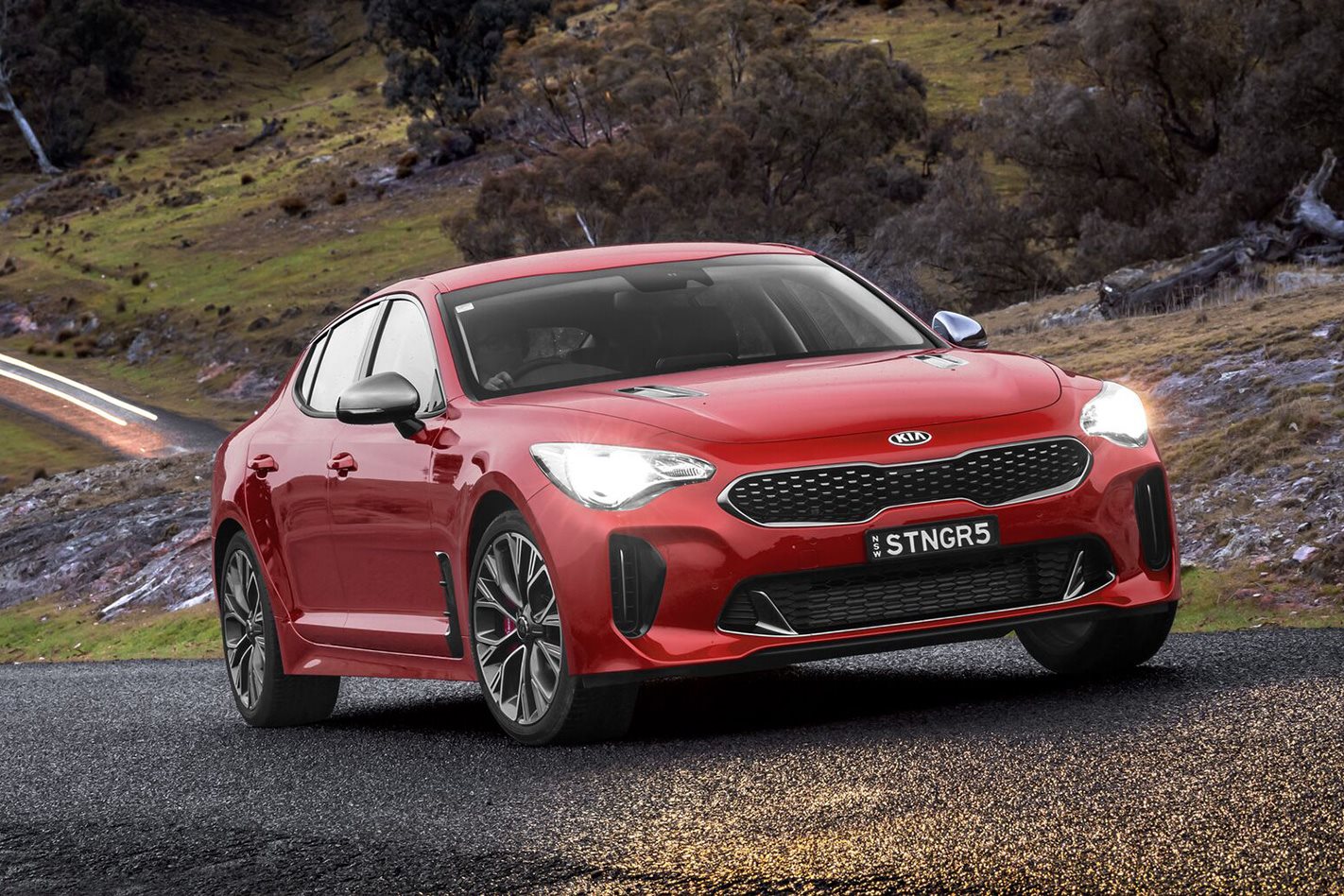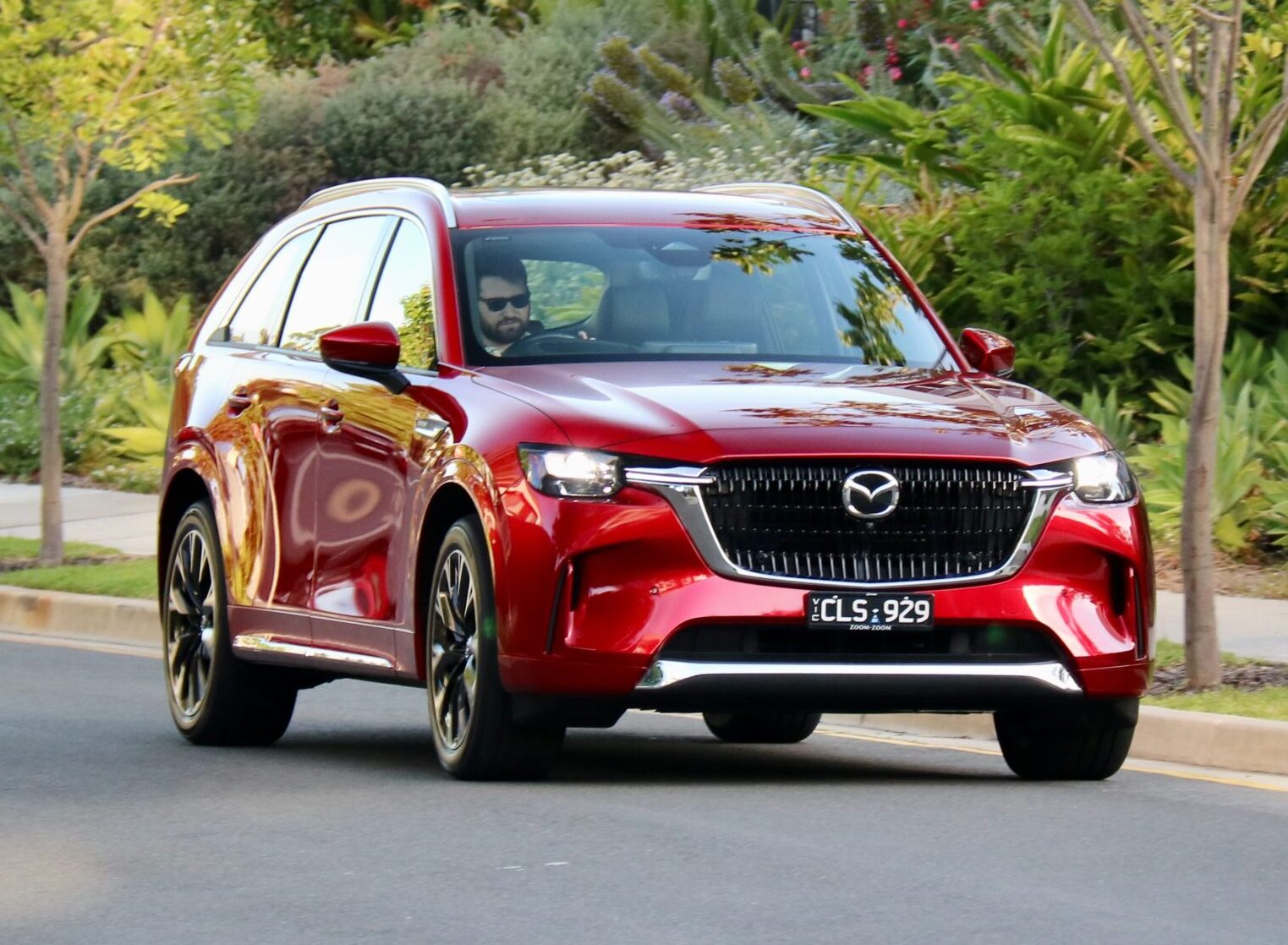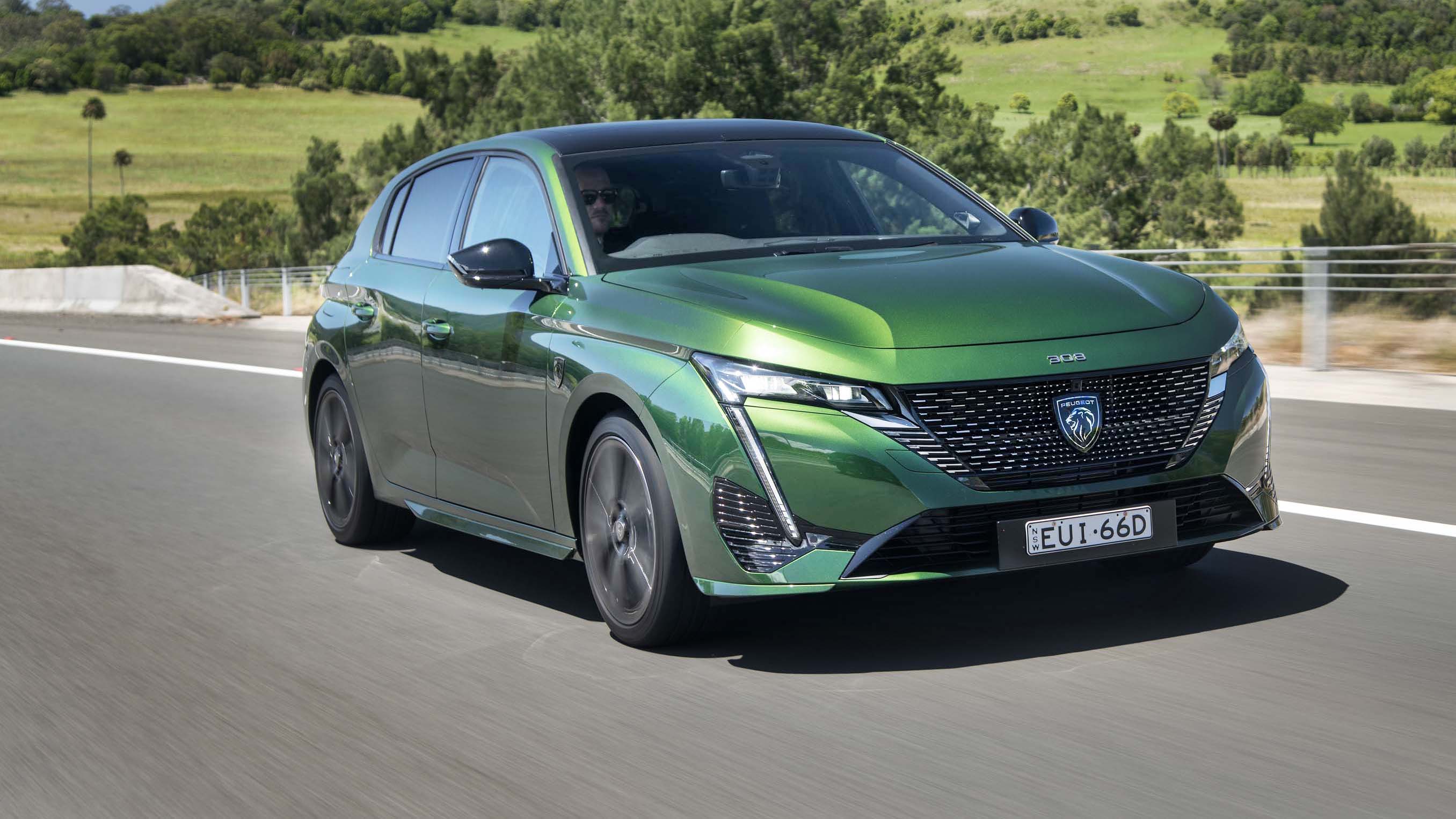THE Kia Stinger will launch in Australia in October featuring a more economical 2.0-litre turbocharged four-cylinder engine.
WHAT IS IT?
The $52,990 Kia Stinger 200Si is the mid-grade in the three-variant 2.0-litre line-up. It’s not quite as poor as the entry-level $45,990 200S, and not quite as dynamically capable as the adaptive suspension-equipped $55,990 GT-Line.
WHY WE’RE DRIVING IT
The Kia Stinger is the Korean brand’s much-hyped hero car. The 272kW V6 version is the most powerful production car to wear a Kia badge, but not everyone wants all that poke. After all, the sharp, svelte Stinger is a bit of a looker and could be better put to work spurring envy in workplace car parks than impressing punters at a track days.
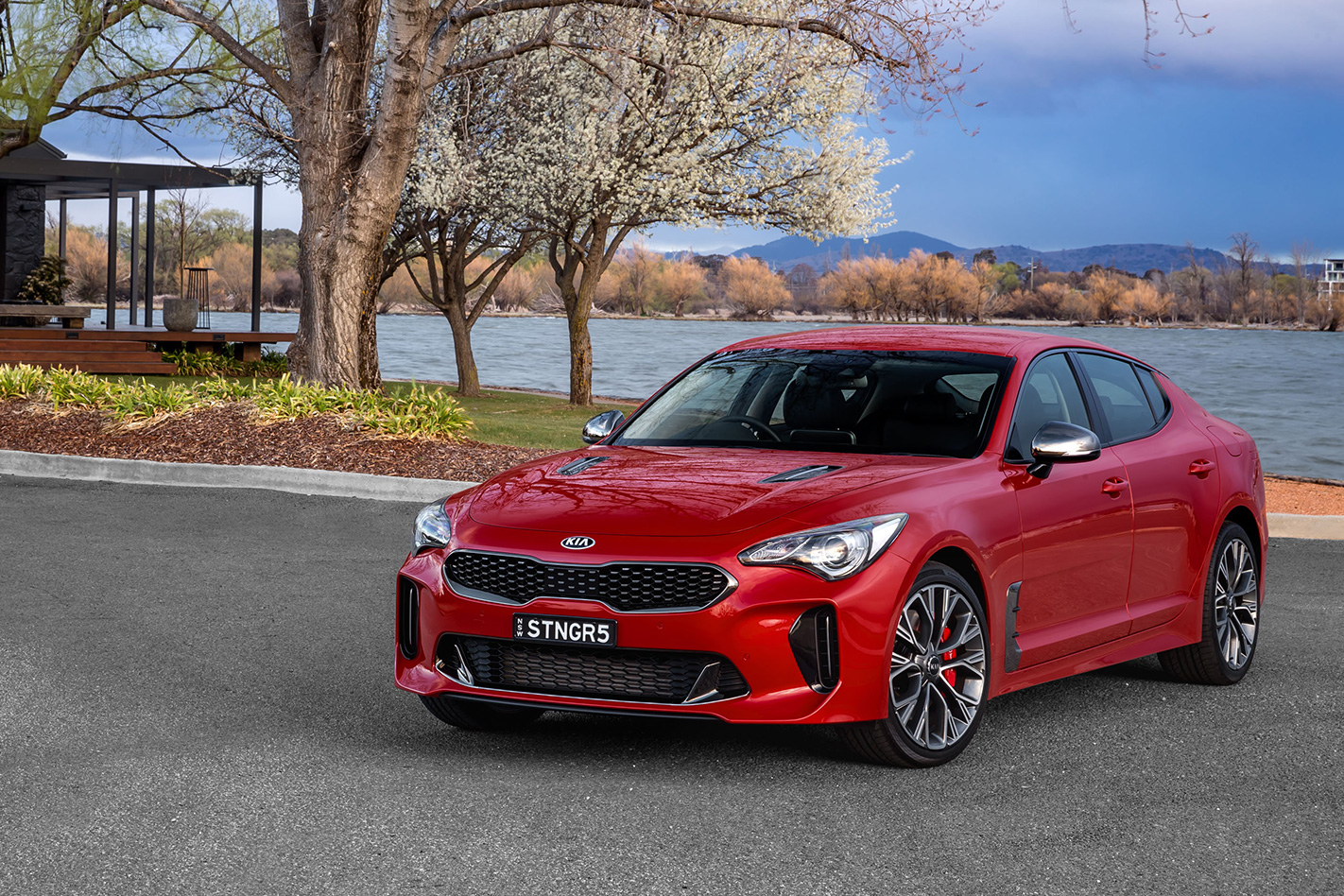
Holden Commodore SV6, Skoda Superb 162TSI
THE WHEELS VERDICT
The turbocharged Theta II engine has been something of a rough diamond under the bonnet of the Optima GT, and not much has changed. It brings some excitement to the Stinger, particularly when a twisty stretch of road presents itself, but more work is needed.
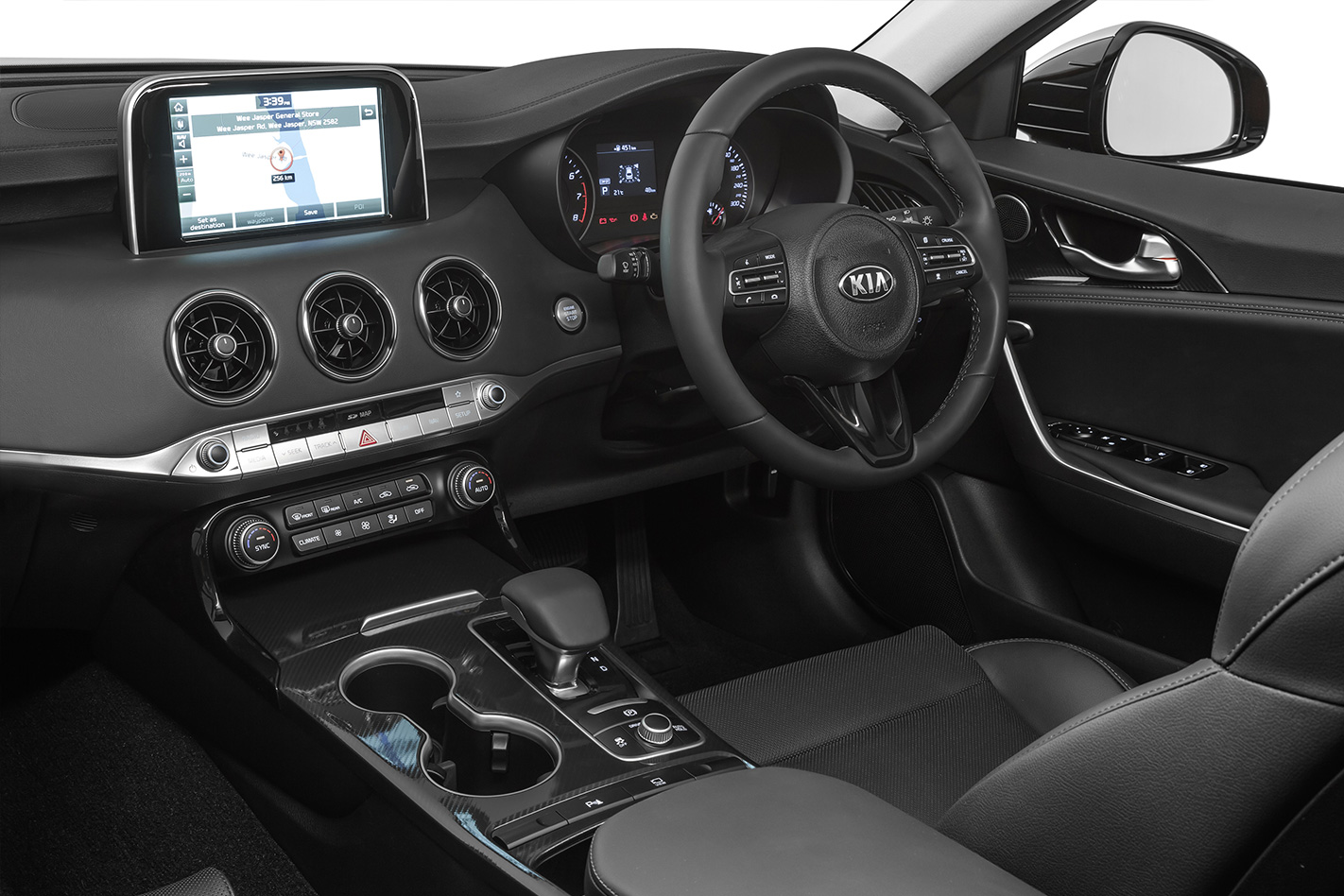
THE WHEELS REVIEW
NOT everyone with a sports car needs performance as part of the mix. It’s why we have V6-engined Holden Commodores, 2.3-litre Ford Mustangs and, now, 2.0-litre Kia Stingers.
The 2.0-litre turbocharged four-cylinder engine that fills the under-bonnet space of three of the Stinger’s six variants allows Kia to drop the price of entry to a sharp $45,990 for the 200S, but it comes with compromises other than its downsized engine.
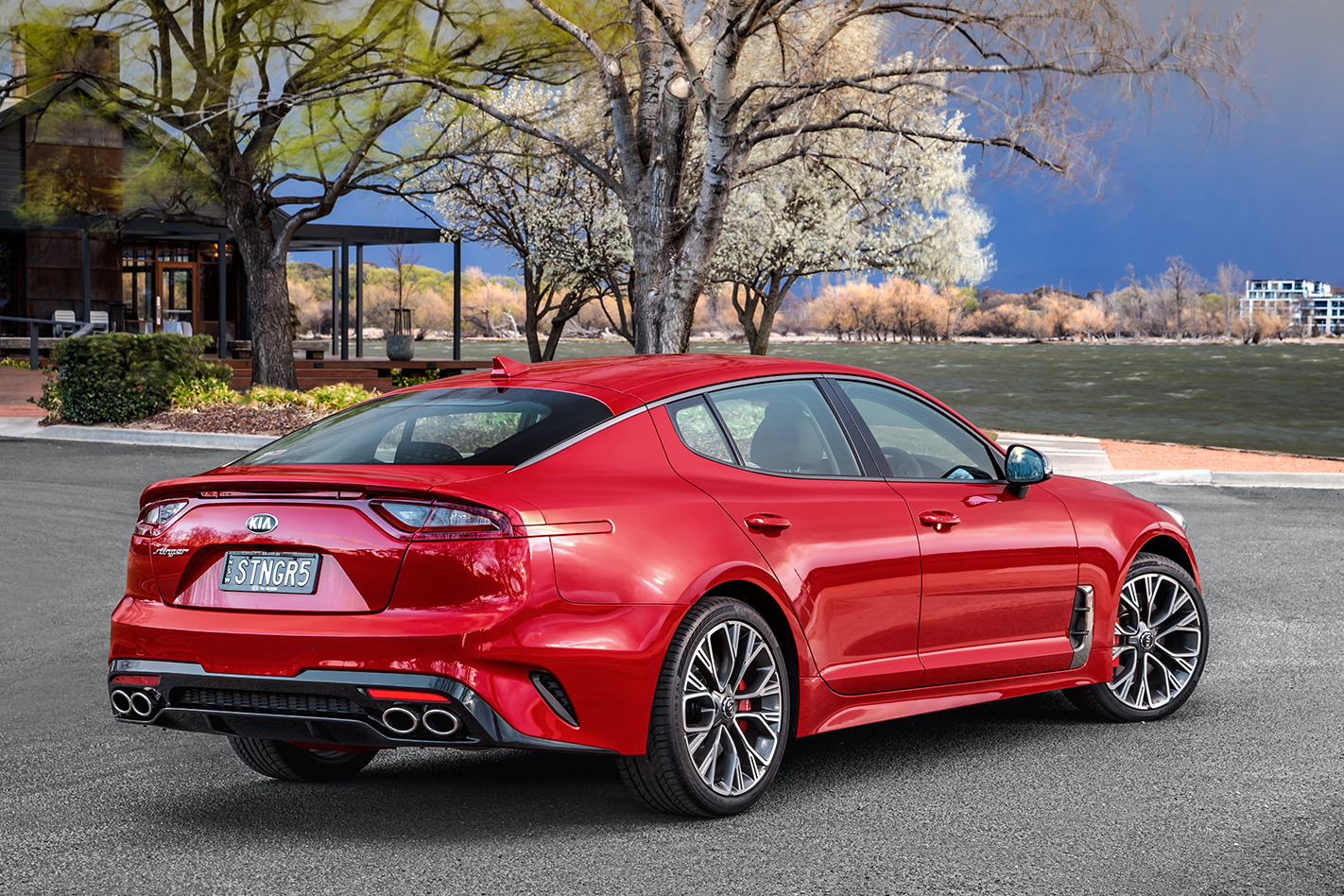
And for the extra spend, the Si grade packs plenty more kit. Features like front parking sensors, active cruise, a lane-keep assist, a driver drowsiness monitor, leather trim on the sports seats, auto wipers and headlights, splashes of faux carbonfibre trim replacing swathes of black plastic inserts – we noticed a lot of creaking from the 200S’s more plastic interior that was absent from the higher-grade cars – and that artificial engine sound enhancer. Don’t grumble about that last one, everyone lip-syncs these days.
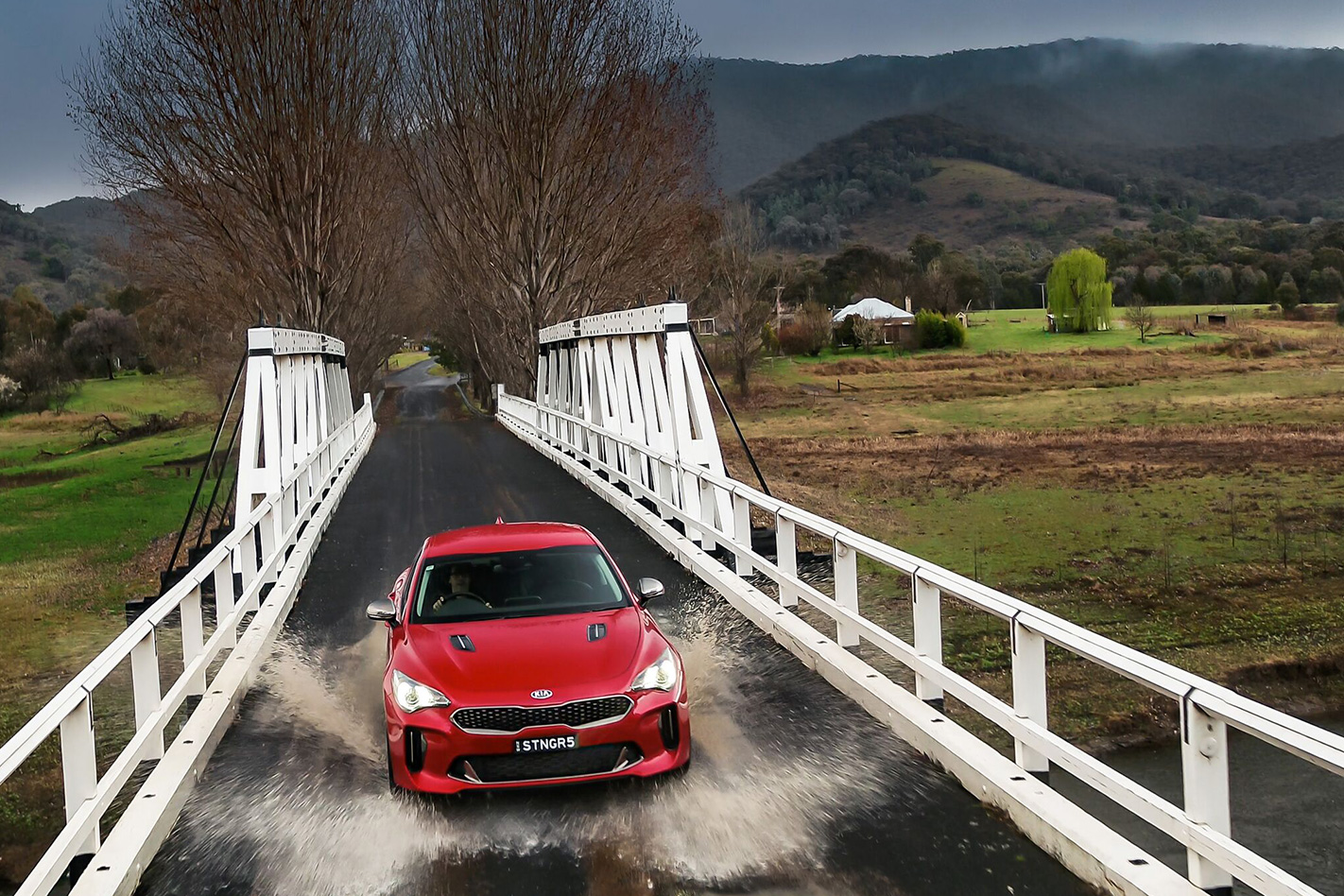
This is because the Theta II engine suffers from the same malaise it did under the bonnet of the Optima GT: significant turbo lag on step-off. Push the accelerator from a standing start and there’s a moment of hesitation as the turbos spool up to unleash their grunt. It gets a bit buzzy high in the revs, and the active sound enhancer does little to make it better. Kia is working on adapting its bypass valve developed for the V6 exhaust to the 2.0-litre engine, which will be a welcome dealer option.
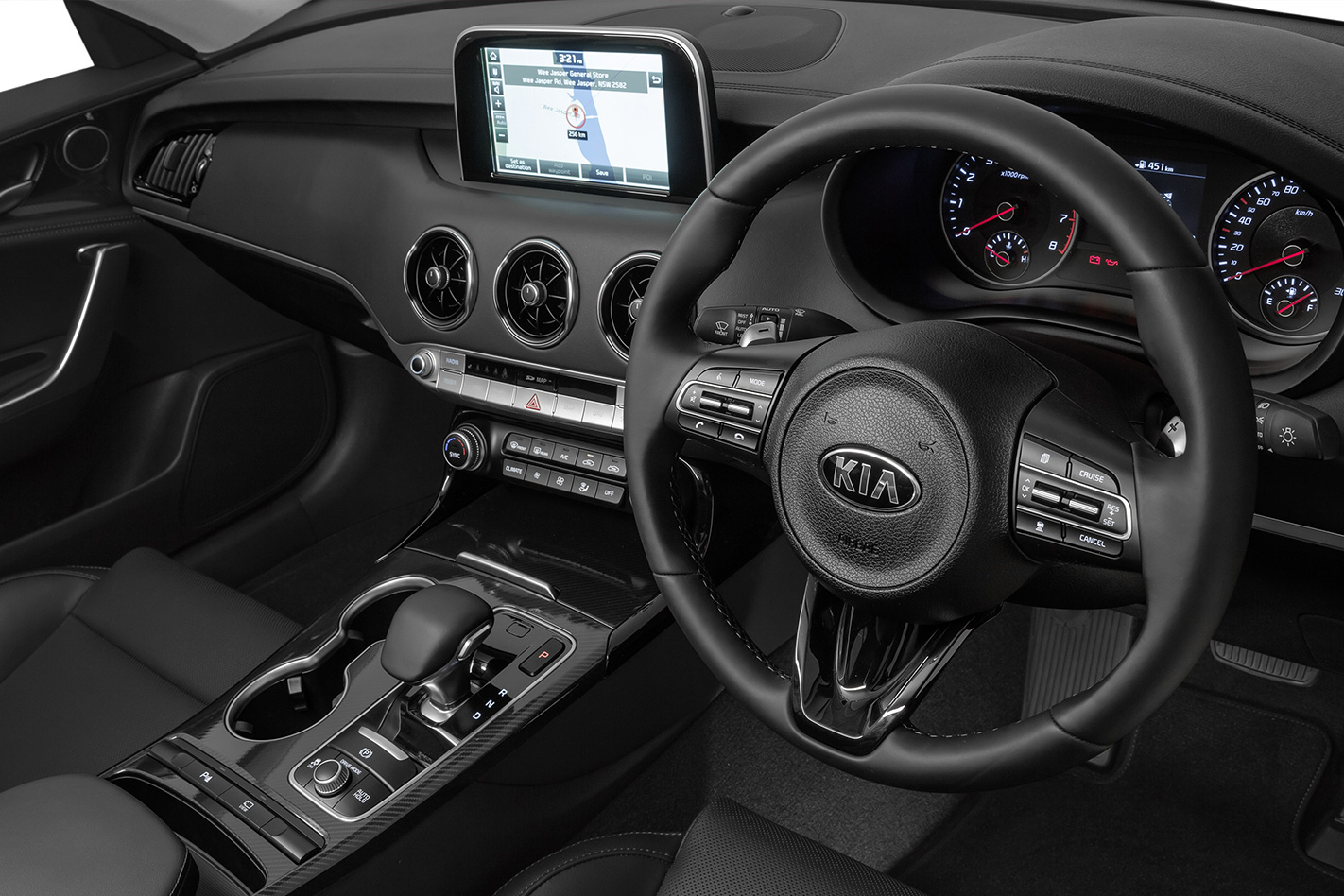
Like its bigger V6-engined siblings, the 2.0-litre Stinger has the on-road ride nailed. Firm, but compliant when needed, it smooths out imperfections on the road surface with quasi-luxury aplomb. On the track, the chassis is well-sorted, although the lack of an LSD reveals itself as mild understeer when pushed hard. The lighter 200Si also shows a propensity to hang its tail out a lot more willingly than the V6.
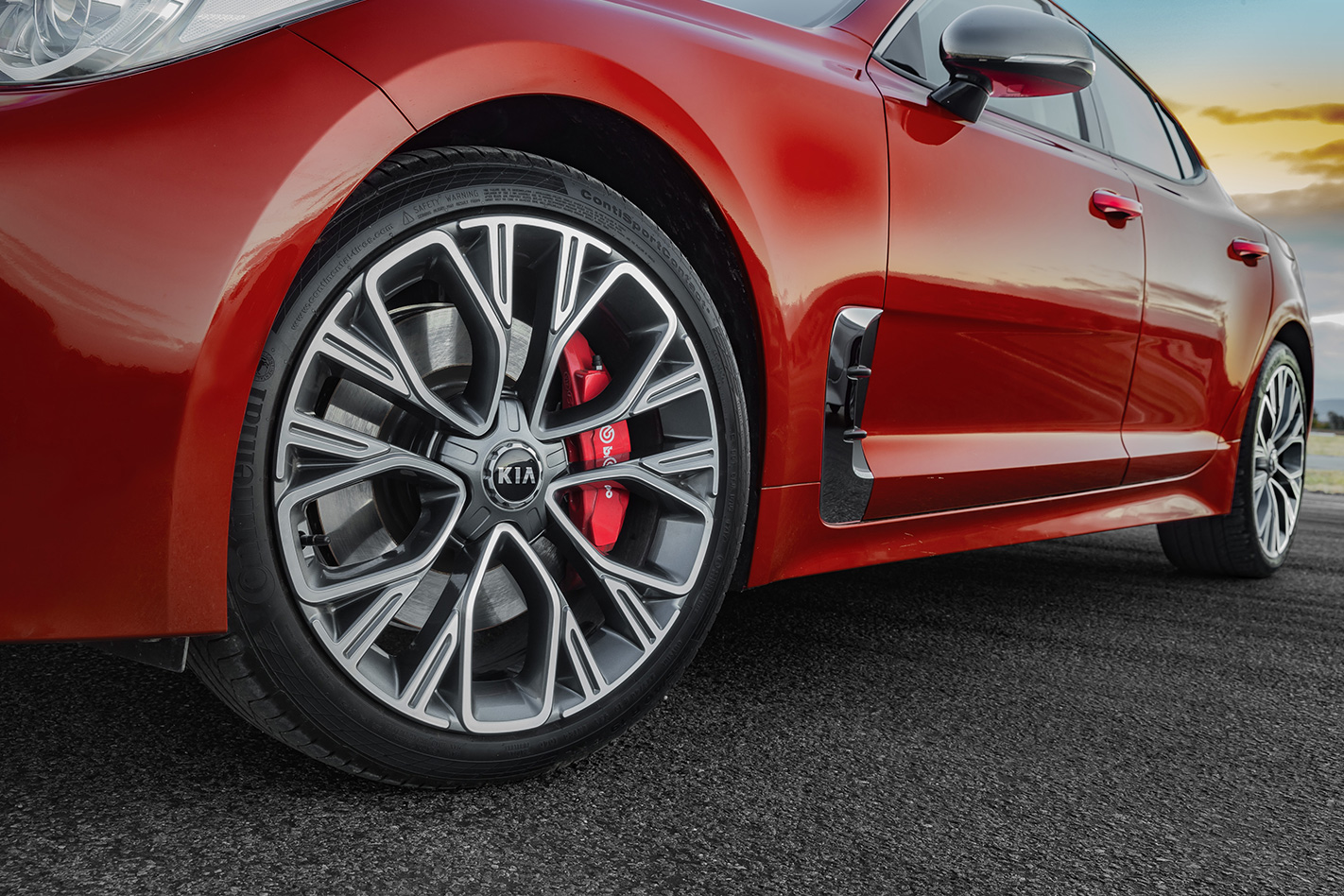
The 2.0-litre Stinger comes across as an engaging alternative to the front-drive drudgery sweeping the new-car market. It’s a bold step from Kia, and a learning curve for a car maker that wants to shake off its front-drive cardigan and replace it with a rear-drive hoodie. It just has to find the right size.
SPECS Model: Kia Stinger 200Si Engine: 1998cc 4cyl, dohc, 16v, turbo Max power: 183kW @ 6200rpm Max torque: 353Nm @ 1400-4000rpm Transmission: 8-speed automatic Weight: 1693kg 0-100km/h: 6.0sec (claimed) Economy: 8.8L/100km Price: $52,990 On sale: October

